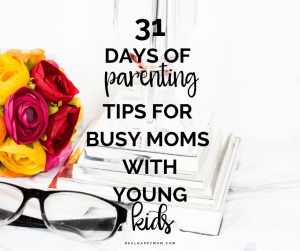I know I was excited when I first started introducing solid foods to my oldest son, 5. There were bananas and potatoes that I was excited to serve him.
But I quickly found out the foods that he liked and didn’t like.
Soon I found that 5 was like many toddlers. He had developed an aversion to new foods or only want to eat one certain food at every meal.
Many moms notice that this happens around the infamous “terrible twos.”
Like most moms, I feared that 5 was not getting proper nutrition because he was a picky eater.

What many moms don’t realize is that toddlers do not need to eat as much as you might think.
Growth slows down around two years of age, often resulting in a decrease in appetite. So your active two-year-old may actually be filled up with just a few bites.
A lack of fruits and vegetables in the diet was also a concern.
These food groups are trouble spots for many toddlers, and they do contain lots of healthy nutrients. But as long as the child is growing normally, there is usually no need to worry.
If you are like me and are worried about your little one being a picky eater, I have a few tips to help!
Tips for introducing new foods
It is not uncommon for a child to refuse to eat new foods. But if you offer a food consistently, your toddler will be more likely to try it eventually.
Put the food on the plate
Try putting a small amount of the food you want your little one to try on the plate a couple of times each week. For instance, put a small portion of corn on your little one’s plate to try and get them to try some.
This usually results in your little one taking a bite at some point.
Ask to take a bite
Another approach is to ask your little one to try one bite of a new food. Knowing that they only have to take a single bite makes it less intimidating.
I do this with 5. Sometimes he surprises me and actually likes the food that I have asked him to try. This is always a huge win!
If your little one says they don’t like it, wait a few days and ask to try a bite again.
If after two or three times they still don’t like the food, then it’s time to move on.
Keep trying foods in the group they are lacking in until you find something they do enjoy.
For example, 5 doesn’t like to eat vegetables. I encouraged him to take a bite of broccoli three nights in a row. And each time he tells me he doesn’t like it. So I stop asking him to try broccoli and introduce zucchini next.

Lead by example
Eating the foods you are trying to get your toddler to eat is a good way of teaching by example.
Making sure when you are eating to let your little one know how good it is and how much you enjoy it.
Remember that is your little one doesn’t see other family members eating the foods that on their plate, they won’t be interested in trying it for themselves.
So put a scoop of broccoli or spinach on your plate and eat it with your little one.
Let them make a choice
Letting your little one choose between items in the same food group makes them feel empowered. Like their opinion matters.
Next time, let your little one choose between broccoli and corn or grapes and apples.
You could even let them choose some healthy foods when you are grocery shopping.
If it is their idea, they will be more likely to try it with an open mind.

Let them help
Letting your child help cook is another way to get them involved in their food choices.
Even young toddlers can help in the kitchen. Here are some things that your toddler can do to help you out in the kitchen (with supervision, of course):
- Mix or whisk
- Pour ingredients
- Wash fruits and vegetables
- Clear their plate
- Unload or load the dishwasher
- Put ingredients in a blender or food processor
Prepare a meal together
Also, try using a recipe book with pictures. This will allow you to choose recipes together.
Then you can go to the store together and get the ingredients. Then come home and prepare the recipe you have both picked out.
Kids are usually eager to try things that they helped make.

Conclusion
You are not alone with your picky eater. Picky eating is a frequent source of friction between toddlers and their parents.
Setting a good example with your eating habits and casually, but consistently introducing new foods may help your little one broaden their horizons.
If not, take comfort in the fact that picky eating is usually a phase that your little one will soon outgrow. I am sure that you will be happy when this is over.
Let me know in the comments what has helped you with your picky eater.

This post is a part of the series 31 Days of Parenting Tips for Busy Moms With Young Kids. Each day throughout the series I am discussing a different topic regarding parenting young kids. I’d love for you to follow along and share this series with moms who may need some support or just to hear that they aren’t alone in their journey of raising young kids.
Find all of the posts in one place on the series homepage: 31 Days of Parenting Tips for Busy Moms With Young Kids

[…] 6 Things You Need to Know to Get Your Picky Eater to Try New Foods […]